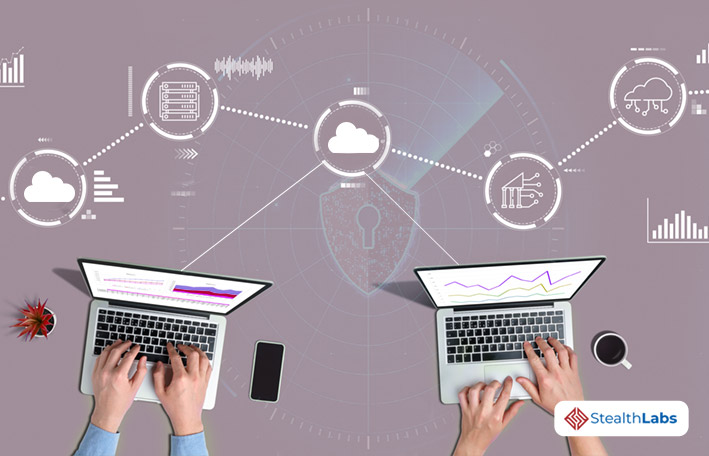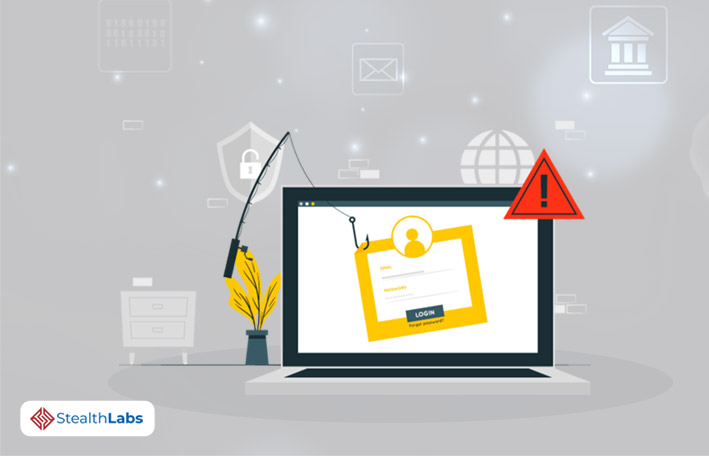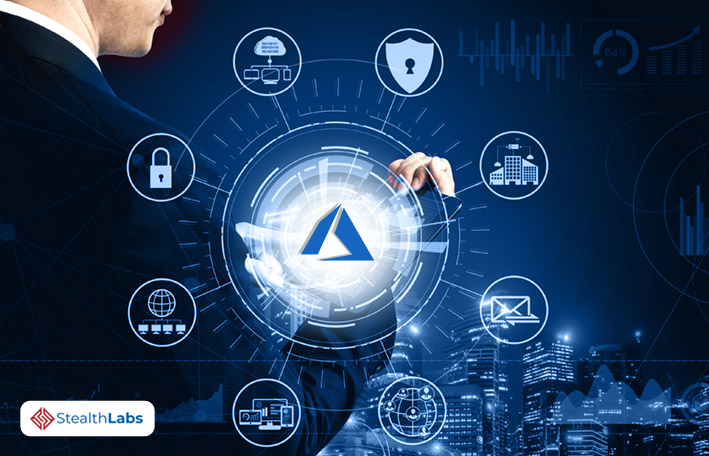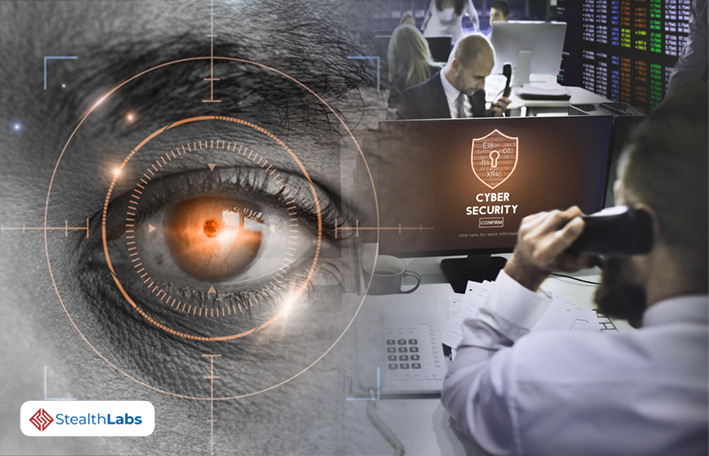As the pandemic continues to rage, the world has adjusted to the new normal of remote work. Caught off-guard, organizations rushed pillar to post to make remote working a reality. However, most organizations ignored the cybersecurity aspects in a rush to survive.
Many granted permission to their employees to access secure servers from the unsecured home servers, which pose a threat to corporate security. With cyberattacks on the rise, it is apparent that security should be the foremost priority for organizations as remote working brings on a variety of potential cybersecurity threats. Despite the potential threats, remote work continues to remain on the horizon thanks to the undesired pandemic.
A survey from Gartner observed that 47% of the surveyed corporations are willing to allow their employees to work remotely, permanently while 82% of them are planning to give remote working options to their employees on a hybrid model.
With coronavirus unwilling to abate, many companies are forced to realign the new normal with better security measures, lest they get breached. As cybersecurity was not a priority during the initial remote work, it is better to rethink and implement a robust security strategy to fend off cyberattacks.
Here are some of the most significant cybersecurity threats remote work brings along:
1) Virtual Private Network

As gaining access to official servers is a daily requirement, virtual private network (VPN) software was doled out in huge numbers to remote working applications. However, that opens up doors for brute force attacks through VPNs’.
Businesses across the globe had to tone down their levels of security as they had to choose business continuity over security. As a result, the organizations unwittingly provide room for cybersecurity threats despite the VPN.
As per ZDNet, there was a 33% spike in VPN connections during a survey period of two weeks in 2020. This only indicates that there are millions of potential targets ever since the pandemic began. As per the investigations of Varonis, about 45% of the attacks were brute force attacks, and they were mainly targeting VPN or Active Directory.
After gathering credentials in a premeditated manner, the malicious actors cripple the VPN portals with multiple authentication attempts, which would grant them access at some point. In hackers’ lingo, this mode of attack is called ‘credential stuffing’. If the user’s credentials are compromised in any way, be it the username or password, the cybercriminals are bound to have a deadly edge over the organization’s servers.
The company is much more vulnerable to these attacks if the employees are utilizing Single Sign-On (SSO). With a valid domain login, the attacker wouldn’t have to slog too hard to reach their target servers.
Also Read: Cybersecurity in Education: 10 Important Facts and Statistics
2) Phishing

Angling is a patient game where the anglers wait for the fish to bite the bait. Here, in phishing, the game is pretty similar to angling. The bait here is a malicious link in an email that tempts the user to click it. Should the user ever click, it is safe to say that they have opened Pandora’s box. If perceived objectively, an organization’s fate is decided by one single click.
With the pandemic wreaking havoc, malicious actors are exploiting the paranoia that coronavirus emergence had set off. The criminals have gone the extra mile by building websites that seemingly sell medical gear for staving off COVID-19. From magical herbs to masks, criminals implement scams by slipping in malware when the users click on the dangerous link(s).
Once the malware is successfully installed, the malicious actors can potentially establish a link to their command and control (C2) server. The link allows the attackers to infiltrate the affected user’s data and the company they may be working with.
3) Fake Azure Applications

One of the most significant advantages of utilizing Azure is that it allows the implementation of various hybrid strategies. This is one of the unique aspects of the Microsoft cloud. As the demand for Azure has grown exponentially, cybercriminals have appreciated the fact that most users are relatively new to the Microsoft playground.
Although ignorance is bliss, it is certainly not the case here as ignorance of a gullible employee may wind up denting the organization. The cybercriminals generally package fake Azure apps as part of a mail and ask the employee to grant permissions to the non-existing app. It is pertinent to employ a screening tool and monitor the permissions that the employees are consenting to. It is also wise to conduct regular reviews of all the employees’ personal servers to check for any anomalies.
4) MFA Circumventing

Multi-Factor Authentication has been deemed a formidable defense against cybercriminals. The primary login screen is to comprehend as it only requires the usage of the user-decided credentials. However, the second authentication screen often leaves novice users flummoxed when they come across it the first time.
Exploiting this confusion, cybercriminals have created ways to redirect unsuspecting employees to fake authentication screens. Hacking the company servers would be successful once the employee unintentionally divulges both the credentials to the hackers.
Worsening the situation is the unsecured network connections the employees use. Should the hackers decide to hack a weak Wi-Fi network, it would be a cakewalk for the cybercriminals. In either of the scenarios, the hackers can gain control of the systems.
5) Insider Threats

It is an enigma as to how a human brain functions at times. Additionally, the times have become uncertain to a great extent, thanks to the contagion. Due to the uncertain and changing times that lay ahead, employees might download proprietary software or data on their unsecured data servers. Should any disgruntled employee go rogue, the company would experience a threat of immense magnitude as the insiders would have prior knowledge of the company’s mechanisms.
Making matters worse would be the loss of face and identification of the rogue actor. It is pertinent to monitor the employees’ usage activities and do periodic checks on the downloaded data. Although it doesn’t entirely wick away the possibility of an insider threat, these rigorous checks would trim down the possibilities of such threats.
In Conclusion
With changing times come new challenges. The pandemic has introduced the world to a new reality where employers consider the remote work cybersecurity conditions more. However, it is pertinent never to skip security measures as it is always better to be safe than sorry. It becomes a complex task to educate and monitor all the employees. Companies often outsource their security fortification to third-party experts.
Armed with cybersecurity veterans, Stealthlabs provides customized remote work cybersecurity solutions that stave off cyberthreats. Whatever your company’s scale might be, Stealthlabs is here to secure your organization. Reach to us and double down on your defenses.
More Articles:
- LockBit Hackers Exploit Accenture to Compromises an Airliner!
- User Misconfigurations in Microsoft Power Apps Exposes 38 Million Records!
- AT&T Purportedly Breached! 70 Million Users’ Data Compromised
- Poly Network Suffers Major Crypto Heist, Hackers Haul Away USD 600 Million!
- Accenture Suffers Ransomware Attack; USD 50 Million Ransom Demanded
- Future of Cybersecurity: 5 Trends That Need Close Monitor!

